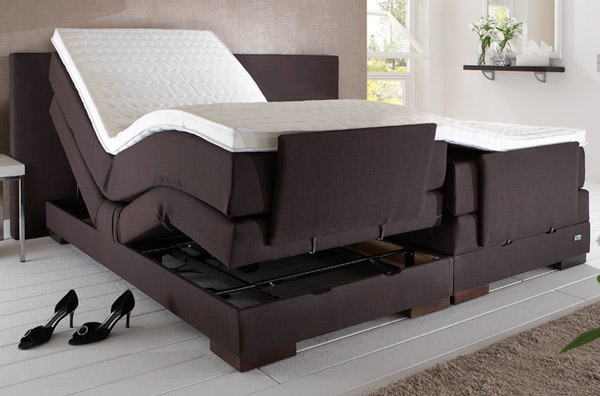Back when we were shopping for bedding, our bedding “wizard” – aka the department store bedding salesman — didn’t know the story of Goldilocks and the Three Bears. The only children’s fairy tale he knew of that had anything to do with beds and bedding was The Princess and the Pea.
As I mentioned when I wrote that bedding post, that makes sense, since it turns out Goldilocks and the Three Bears is an English language story, while The Princess and the Pea is from Han Christian Anderson’s collection and therefore more well-known in Europe.
BTW, I don’t think I ever answered people’s questions about the sheets we bought and have on our bed. There are no top “flat sheets” here in Germany – you have a fitted sheet and a comforter that goes on top. The comforter has a machine-washable cover that serves as a kind of top sheet. So, we have a mattress on top of the bed frame; recall that there’s no box spring underneath the mattress, it’s just the mattress. The mattress has a fitted sheet on top of it, and the comforter, in the comforter cover goes on top of that.
That was a slight digression, but keep that mattress information in mind, it will be important in a minute.
Anyway, back to today’s fairy tale.
Now, the key thing I remember about the Princess and the Pea story is the idea that a prince is trying to find a princess to marry, and she must be a “real princess”. His mother, for reasons I don’t recall, doesn’t want him to get married, and keeps finding fault with each princess who applies for the job. Finally, a princess arrives and the mother decides that if she’s a real princess she will be so sensitive that a single pea placed in her bed will disturb her sleep. The mother effectively rigs the test, piling many, many mattresses on top of that pea, so that the princess has to climb up into the bed. In the morning, the princess has had a restless night’s sleep, the prince rejoices since it means she’s a true princess and felt that “pea”. And so they all live happily ever after. Well, except I have to wonder how happily ever after the princess lived if they still lived with her mother-in-law. But I guess you’re not supposed to worry about things like that with fairy tales.
Anyway, I bring this up because recently we received an advertisement in the mail from a furniture store. They were ballyhooing their wonderous new furniture: Boxspringbett. Yes, that means a mattress and box spring bed.
Ah ha, I hear you cry, so they finally have box springs and mattresses in Germany like they do in North America?
Hmm … not quite:
That contraption isn’t like any regular box spring and mattress I’ve ever seen in the U.S.
In the first photo in the ad I saw, which unfortunately I couldn’t find online, there was a woman actually perched on top of the bed. It struck me that the bed designers had somehow mixed-up copies of The Princess and the Pea story with their design plans for a box spring and mattress bed. I mean, look closely; you could easily hide a pea in that contraption to do a princess test.
Of course, even without the pea, I can’t imagine getting a good night’s sleep on a bed that contorts itself those positions. Maybe the bed was really designed by a prince, to make sure his princess would be able to pass the test, i.e. by not getting a good night’s sleep, pea or no.
Hmm, I don’t remember that part from the original fairy tale.
*****
Actually, while I don’t remember the prince “cheating” to help the princess in the original Andersen version of the tale, giving the princess a little extra help to make sure she passes that test is part of the plot of the 1959 Broadway musical version of the story. That show is called Once Upon a Mattress. And at the end of the musical version, it “wasn’t the pea at all” that kept the princess from sleeping. This musical has been filmed several times over the years for television, as it turns out, most recently in 2005: here’s a clip from the end of that version that shows why the princess really had a bad night’s sleep (the answer starts at 4:35 in the clip). The 2005 version seems to be played much more broadly than in the original play, at least from what I remember when I was the rehearsal pianist for a production of it back in college.
It’s worth noting an interesting bit of stunt casting in the 2005 version, though. The evil mother is played by Carol Burnett, who originated the role of the princess on Broadway. She also filmed a couple of earlier versions of the musical for television, where she’s playing the princess. Here’s a clip of her in the 1970s version, performing my favorite song from the show, where the princess is singing about how she wants to pass the test and then, like all the other fairy tale princessess, live Happily Ever After.
Enjoy.


Look at those black high-heeled sandals! Clearly Cinderella is not referenced in this ad. Not our American, Disney version anyway.
It has the look of a hospital bed. Of course hospital beds don’t have a mattress that high.
Es gibt auch andere Arten von Betten – mit Lattenrost und “normaler” Matratze 🙂